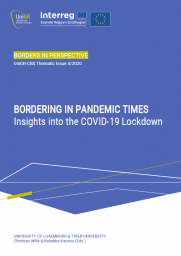Working Paper Vol. 24

Schengen countries are increasingly relying on the Schengen Borders Code to make internal borders less permeable. This Working Paper focuses on the ongoing reintroduction of temporary internal border controls within the EU between 2015 and 2024, as well as the justifications provided by Schengen countries for these measures. The analysis identifies four phases, reflecting a gradual displacement of the Schengen spirit—established 40 years ago—by a prevailing border spirit. While open borders and free movement remain guiding principles of the European Union, national border regimes are gaining ground and are continuously being adapted to fluctuating threat perceptions. Migration, terrorism, public health, and hybrid threats serve as discursive resources to legitimize a Schengen reality that can no longer be regarded as exceptional, but rather as part of a normalized, security-oriented European order. This trajectory is characterized by a re-nationalization of border policy within the EU, an ever-expanding rhetoric of crisis, political instrumentalization, and an ambivalent mode of EU border governance.


